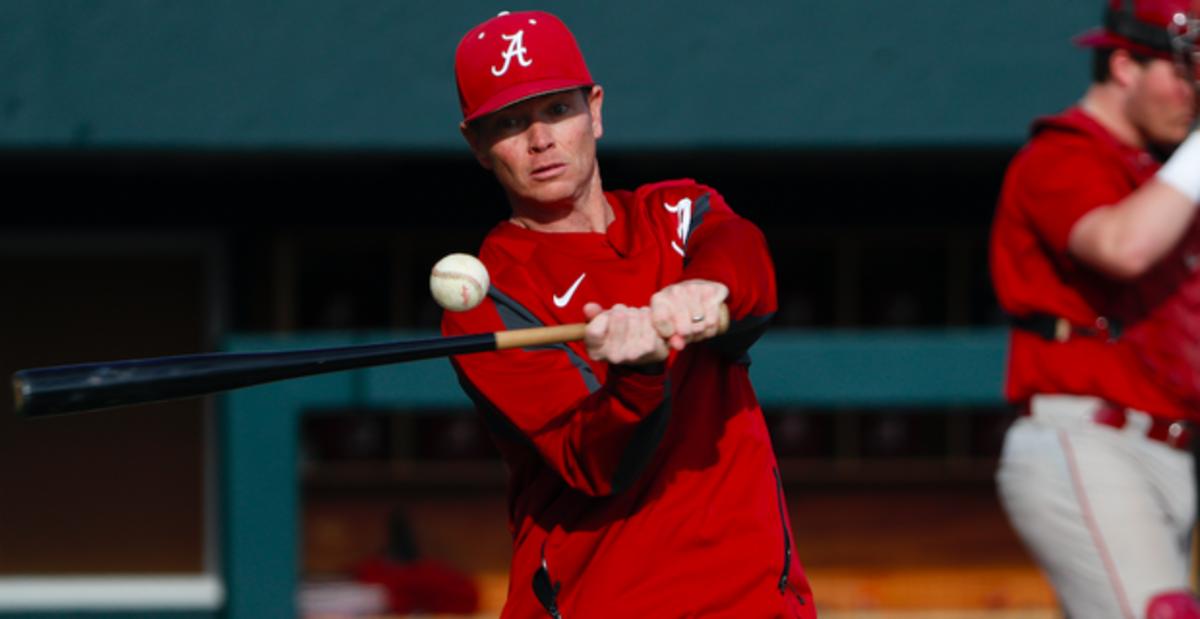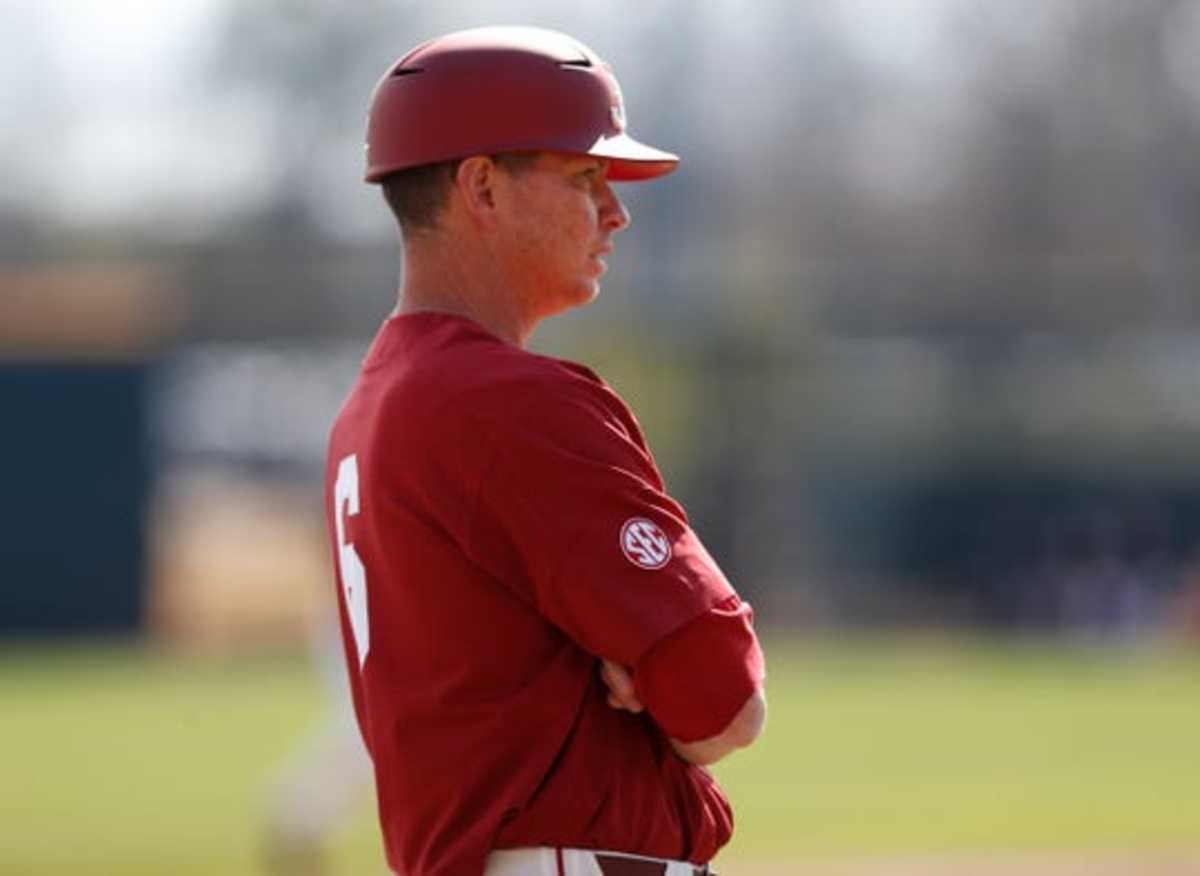'A Juggling Act': The Impact of COVID-19 on College Baseball Scholarships

TUSCALOOSA, Ala. — When it comes to the near future of college baseball, Alabama coach Brad Bohannon is concerned.
Not just for his players, but by the scholarship and roster-size limits instituted by the NCAA on the sport.
“It’s always a juggling act in college baseball because of the roster limits, the scholarship limits, yet the number of players that you need and then you have the MLB draft so we were just in a holding pattern for so long,” said Bohannon, who wrapped up his third season as the Crimson Tide’s head baseball coach in March when the season came to a sudden and abrupt halt due to COVID-19.
NCAA rules concerning roster size have been as follows: a strict 35-player roster, consisting of a maximum of 27 scholarship players and eight walk-ons.
Only the equivalent of 11.7 full rides are offered for the team each year, and they must be divided amongst those 27 players. On top of that, a player cannot receive less than a 25-percent scholarship, making the process that Bohannon referred to as ‘a juggling act’ even more difficult to manage.
.@CoachBo_Bama knows that resources and facilities were instrumental in the success @AlabamaBSB had before their season was cut short. To the donors who helped make it happen, he shares his thanks! #StillTideTogether #RollTide pic.twitter.com/gotpqnJGJn
— Crimson Tide Foundation (@UACTF) May 15, 2020
Soon after spring sports were cancelled, the NCAA instituted new rules to provide relief for the student-athletes: all players participating in spring sports were granted an additional year of eligibility, and sports like baseball were granted a temporary roster size increase to allow for seniors to return for an encore season.
Initially, the new NCAA policies were received well, the feeling being that the players who worked so hard over their seasons at their respective schools rightfully deserve another shot to close out their college careers.
However, in terms of sports like baseball, it has created a big roster-size problem that coaches will have to manage in the coming years.
One lingering issue will be with the seniors returning, as well as all other athletes currently on the roster, it becomes very difficult for coaches to manage that roster when adding additional freshmen.
Bohannon outlined this issue during an interview on The ‘Bama Beat podcast:
“People have asked me about now that we could potentially have five different groups here — the roster sizes and all that,” Bohannon said. “For us here at Alabama we’re going to be able to make it work a lot easier for this next year than we are a couple of years down the road and here’s why: just to use round numbers let’s say you had 10 freshmen on the team this year and then you sign 10 kids in November. Well, in theory this fall you’re going to have 20 freshmen so, like, that doesn’t work.”
In total, the Crimson Tide has eight seniors slated to return. It initially had nine players, but on April 30 shortstop Kolby Robinson decided to forgo his additional year of eligibility to “hang up the cleats and start a new chapter in life.”
Thank You Alabama❤️ pic.twitter.com/7MEIGWZJnV
— Kolby Robinson (@k_robinson20) April 30, 2020
In an interview with BamaCentral on the All Things Bama podcast, Robinson revealed that he initially wished to return for his extra season of eligibility.
"I definitely would love to come back for another year and continue playing the game," Robinson said. "But at the same time I was trying to think of it from a logical standpoint. Ok we have an extra year, but how is that going to work as far as scholarships go and there was a lot of talk of 'oh maybe they'll give all of the seniors just a free ride to come back' or 'maybe they'll give them more scholarships.'
"I was optimistic at the time and definitely hoping that I would get to come back again for another year."
Robinson's story is akin to many across the country right now. Despite being granted the extra year of eligibility, the financial burden that the student-athletes would have to take on in order to play a sport that most will move on to the next level in is stacking the odds against them.
Bohannon acknowledges that not all seniors across the country will be returning, which will slightly alleviate the issue, but nevertheless the problems are still quite glaring.
“Out of 35 guys there’s obviously every year some natural attrition and this and that but you know the real issue you’re going to see in college baseball is going to happen two or three years from now,” Bohannon said to The ‘Bama Beat. “The kids that are potentially coming back, you know, they don’t count against the roster and the scholarship limits so it’s going to be a lot easier to make those guys work. Now certainly there’s going to be more competition for playing time and this and that if you have a bunch of seniors back but I think around the country and in the equivalency sports I really think there will be fewer seniors come back than everyone assumes.”
As if the complicated issue could not get worse, Major League Baseball recently announced that due to the coronavirus, the 2020 June draft will be limited to just five rounds instead of the usual 40.
This means that only 162 student-athletes out of thousands will be drafted, resulting in an overcrowding issue that was already difficult enough to manage.
Bohannon is not immediately concerned with his roster at Alabama due to the low amount of seniors and large number of young players, but it will be for a lot of teams across the country.
“We’ve got a little more clarity with the draft,” Bohannon told BamaCentral. “We know it’s going to be a five-round draft. We had a really young team this past year. We had a lot of freshmen and sophomores in really key roles so I don’t think — not all of our seniors are coming back so between not all of the seniors coming back and having a young team I don’t think we’re going to be in as nasty of a position as some of my colleagues around the league.
“I think we’re going to be just fine from a roster standpoint in the fall and a scholarship standpoint.”
As well as impacting NCAA rosters, the new rules also impact baseball at the junior-college level as well. Many high school athletes who are not eligible for baseball at the NCAA level due to grades or other factors routinely seek out JUCO baseball as an opportunity to play for a couple of seasons before transferring to a larger school.
In the three levels of JUCO baseball, teams that are situated in the top two divisions are allowed 24 scholarships for each team, in contrast to the 11.7 allowed at the NCAA Division I level.
The availability in scholarships could easily cause a spike in JUCO baseball players, causing an overcrowding effect on that level as well. Ultimately, it will hurt high school athletes seeking an opportunity to play baseball.
With the returning seniors at the NCAA level combined with the overcrowding of rosters at all levels including JUCO, the situation has become grim for those athletes who are not ranked at the top of their respective classes.

All of this has caused a significant impact on recruiting in college baseball as well. On May 14 the NCAA Division I Council Coordination Committee announced that the recruiting dead period — which had already been in place since March 13 — would be extended until June 30.
The dead period means that all in-person recruiting efforts as well as off-campus recruiting trips will continue to be banned until Aug. 1 at the earliest.
“It’s really put a standstill on it,” Bohannon said. “I mean we’ve been communicating with kids who are on our list or that we had seen play in the past but you know the high school players aren’t able to do a lot right now so until we can get out and visibly see them do things there’s not a lot to do recruiting-wise besides just trying to grow relationships that were already in place. You know, we recruit kids at a young age — probably younger than we would all like — so I don’t think it’s necessarily a bad thing that a lot of us are hitting the brakes a little bit.”
Finally is the problem of finances in relation to the players. Seniors who have graduated and return to their schools purely for their love of baseball will essentially be punished by having to pay for schooling that they no longer need, being forced to enroll and take on student debt.
This might be feasible for some, but for many others more debt is simply not possible.
“When you’re financing 15-20 grand a year and you have your degree and maybe you’re not necessarily a professional player like does it really make sense to go back and get another 20 grand in debt when you have your degree just for the baseball experience,” Bohannon said to The ‘Bama Beat. “Maybe it does and maybe it doesn’t but it’s different for every person but I don’t think every senior is going to come back just because they have the opportunity and I’m not just speaking about Alabama. I’m speaking around the country.”

The news that the NCAA was granting an extra year of eligibility to student-athletes came with much fanfare and praise. However, upon further examination it could potentially cause great harm to college baseball programs across the country should additional measures not be taken. Increased, crowded rosters along with ineffective scholarship numbers have been issues that have been brought up many times over the years, but now they are at the forefront of the struggles that college athletics are currently facing.
One way or another, the class of 2021 is going to have a rough go of it.
